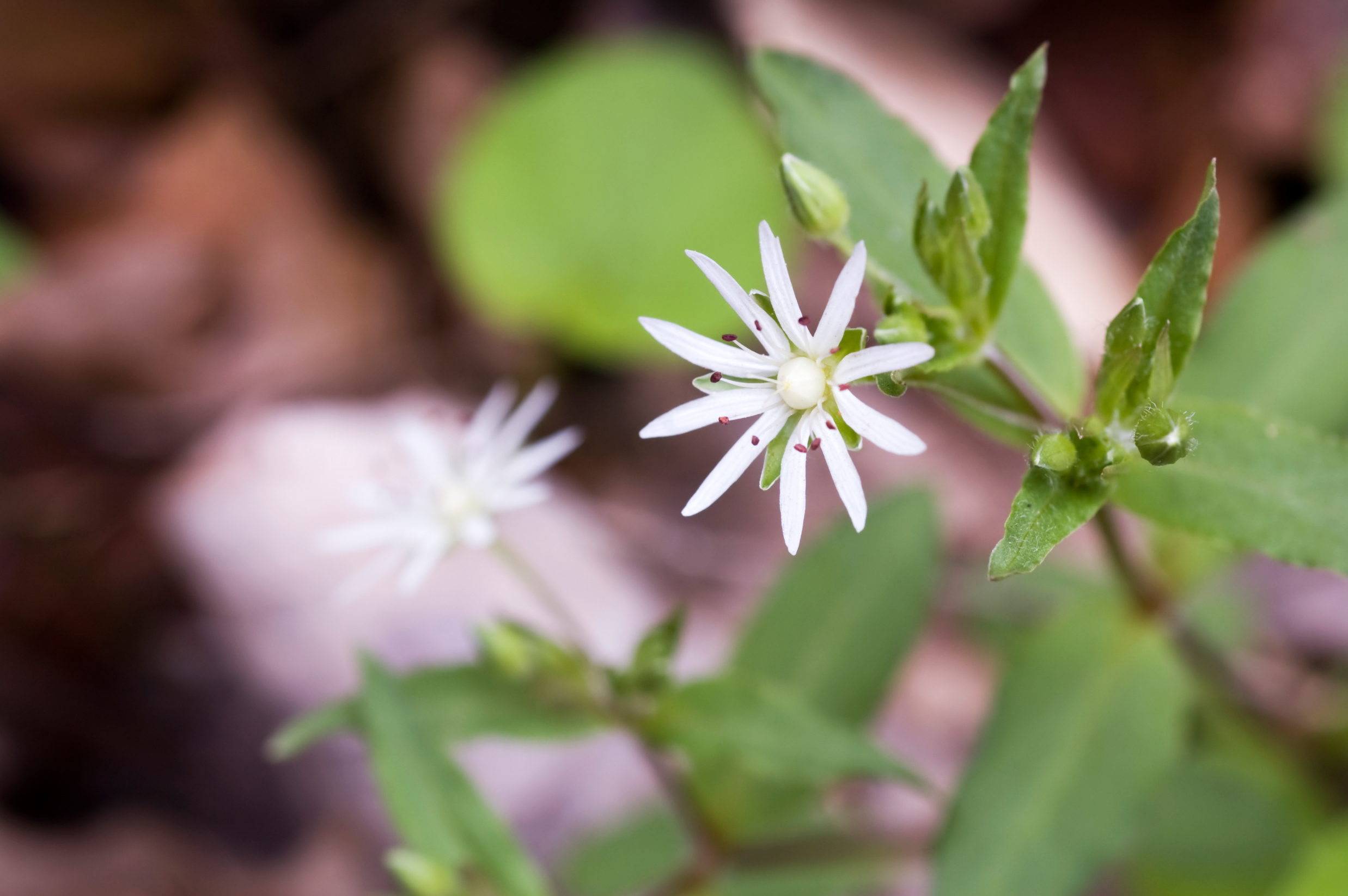Star chickweed
(Stellaria pubera)

Description
Stellaria pubera, commonly called the star chickweed, is a spring-flowering plant in the carnation family Caryophyllaceae, native to the eastern United States. Stellaria pubera is widespread and common. Its natural habitat is bottomland forests and mesic forests, where it is often found on rocky slopes. It is found chiefly from Pennsylvania south to Georgia and west to Indiana and Alabama, with scattered populations in New York, New England, Illinois, Nebraska, Mississippi and Louisiana. An early spring bloomer, star chickweed may be seen in flower as early as late March. It grows 6 inches (15 cm) to 12 inches (30 cm) high. The leaves are ovate, growing opposite one another and usually attached without stalks to the weak and sometimes reclining stem. Close examination of the flower reveals that what appears to be ten petals are actually five, each deeply cleft. The blossom as a result looks star-like, with its white, pointed petal segments surrounding an off-white center. Stamens are tipped with dark anthers. The stem has rows of small soft hairs that switch sides at each node. It is similar to Stellaria corei, with which it can easily be confused. The star-shaped flowers of star chickweed inspired the common and Latin name for this flower. The genus name, Stellaria, comes from the Latin stella, meaning "star". The species name, pubera ("hairy"), comes from the lines of hairs that line the stem. Stellaria is a genus of about 90 to 120 species of flowering plants in the family Caryophyllaceae, with a cosmopolitan distribution. Common names include starwort, stitchwort and chickweed. Stellaria species are relatively small herbs with simple opposite leaves. It produces small flowers with 5 sepals and 5 white petals each usually deeply cleft, or none at all, all free. Stamens 10 or fewer. Some species, including Stellaria media which is widely distributed throughout the Northern Hemisphere, are used as leaf vegetables, often raw in salads. This is a favored food of finches and many other seed-eating birds.
Taxonomic tree:







